What’s in Your Shed visits a Minneapolis mixed farm
American farmer Dan Erickson is the latest to reveal the good, bad and ugly of his machinery fleet for our What’s in your Shed? series.
Mr Erickson is based in southern Minnesota, USA, and rears a 400-head, outdoor-housed dairy heifer herd alongside his grain maize and soya bean operation.
His kit list is dominated by John Deere machinery, along with a front boom Hagie sprayer and two artic wagons for grain haulage.
See also: What’s in Your Shed visits a Monmouthshire contractor
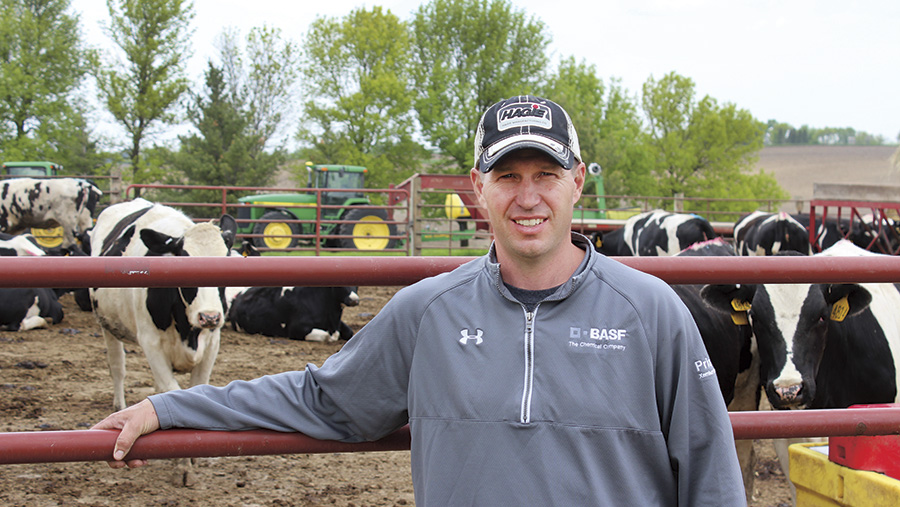
Dan Erickson
Where do you farm?
Our family farm is a couple of hours south of Minneapolis, close to the border with Iowa.
We are in prime grain maize and soya bean land and most of the farms around here grow only those two crops.
The winter is too cold for anything autumn-sown, and spring cereals can’t be drilled until early May because of the frost risk.
Our heavy soils also take a long time to dry out, so the growing season is just a bit too short.
Farm facts
- Crops Maize for corn 340ha, maize for silage 20ha, Soya beans 450ha, alfalfa 32ha
- Livestock 400-head dairy heifers
If you head an hour east of here then you’ll reach the dairying regions, but most of the cows are long gone from this area.
We had a milking herd up until 17 years ago, but it got to the point where we needed to invest a stack of cash to keep it running.
I decided we’d be better off focusing on calf rearing and the arable side of the farm.
Milking cows was never really for me.
How big is the farm?
We cover about 525ha, which is pretty average by Minnesota standards.
In my opinion, you need at least 325ha to be sustainable, but there are plenty of farmers running well over 4,000ha.
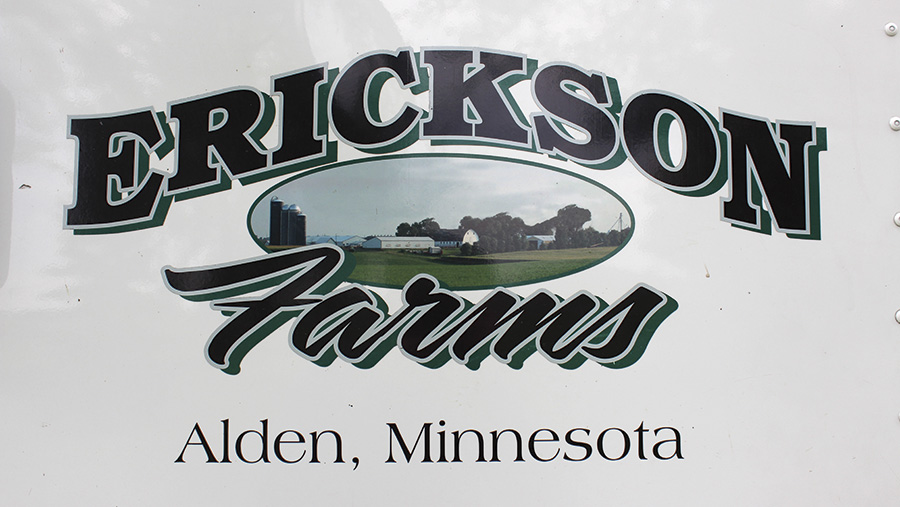
Erickson Farm grows alfalfa, soya beans and maize
What do you grow?
We take four cuts from 32ha of alfalfa each year alongside our staple crops of grain maize and soya beans.
The alfalfa feeds the 400-head of outdoor-housed dairy heifers, which we keep on a kind of bed and breakfast basis for a dairy farm 100 miles away.
The idea is that they arrive at six-months-old and leave at 20 months in-calf.
They’re all AI’d and 50% of that is sexed semen, so we know that a majority of them will be carrying heifer calves.
During the winter temperatures can regularly drop below -10C, but most of the older animals stay outside all year.
We’ve found the better air quality improves animal health, and they’re perfectly happy bedded down on piles of maize stocks that stay far warmer than a regular concrete yard.
How does the rotation work?
The alfalfa leys run for four years.
That gives the crop plenty of time to fix nitrogen into the soil, which gives the subsequent maize crop a real boost.
In fact, we find we need to grow maize for two consecutive years following the alfalfa to make the most of the nitrogen that’s been locked in the soil.
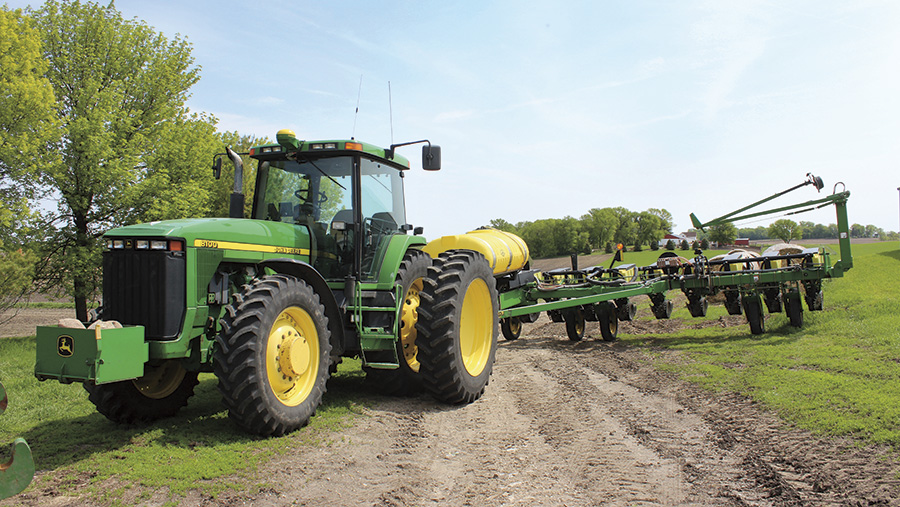
John Deere 8100
What tractors do you run?
Case and John Deere, along with the odd New Holland, make up pretty much all of the tractors in the area.
We’re all Deere – we’ve always had good back-up from the dealer who is about 20 miles away, even if we spend a lot less money with them than some of our neighbours.
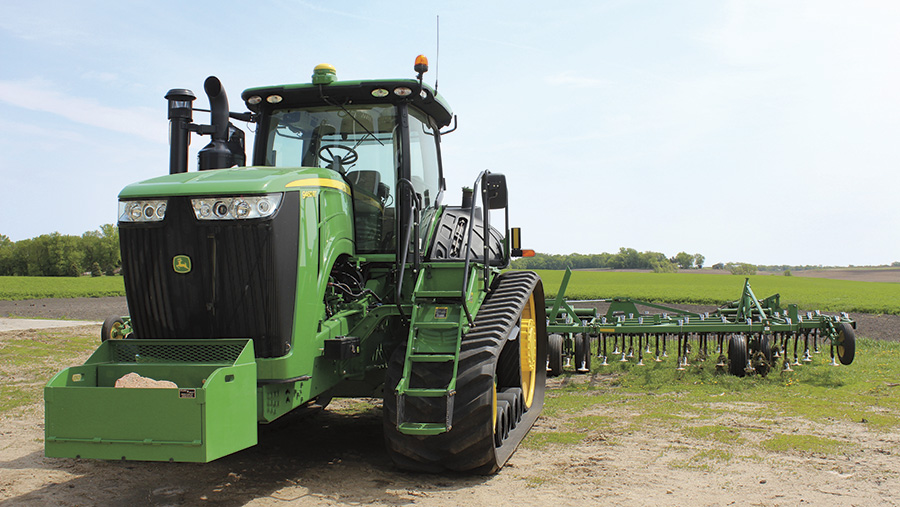
John Deere 9460RT
How often do you replace your machinery?
I’m pretty relaxed about machinery replacement, so there’s no set policy. Our Deere combine keeps doing the business despite being 12-years-old and I’m in no hurry to get rid of it.
The front-line tractor gets replaced most frequently.
We’re running a twin-track Deere, which I plan to keep for at least three years.
The fleet
- Tractors JD 9460RT,
- Combine John Deere 9560 STS with 8-row maize header and 30ft bean header
- Sprayer Hagie STS12 – 120ft boom
- Forager New Holland FP230 trailed
- Trailers 3 x Badger 15t forage boxes, Brent 678 grain chaser
- Cultivations John Deere 2700 17.5ft discs, JD 980 44.5ft tines
- Drill John Deere 1770 Conservation
- Fertiliser Nitromaster 8000 54ft applicator
- Mower JD 956
After that, I’ll make a decision depending on how it has performed and the state of the market – if it makes sense to chop it in then I will, but I won’t be afraid to hang on to it for a few more years.
Do you buy second-hand?
Yes, definitely.
We’ve got kit like the old trailed forager that will look pretty ancient to some people, but it still does a perfectly good job so it doesn’t pay to replace it.
Latest purchase?
I’ve added a couple of big machines to the fleet in the last couple of years.
One of those was the 9460RT.
The downturn in commodity prices and slow-up of tractor sales meant I got a pretty good lease contract because the local dealer was keen to shift some machinery from his forecourt.
It’s two years old and is the first tracked tractor I’ve ever had.
I thought I’d try something different because I was sick of the power hop on the old artic-steer 9330.
Granted, the tracks aren’t built for the road, but the air-suspended cab is surprisingly comfortable and Deere has increased the number of lugs on each track to improve traction.
The other benefit of tracks over tyres is compaction.
The twin-track crawler comes in a bit heavier than the wheeled artic, but manages to spread its weight better and puts way more power to the ground.
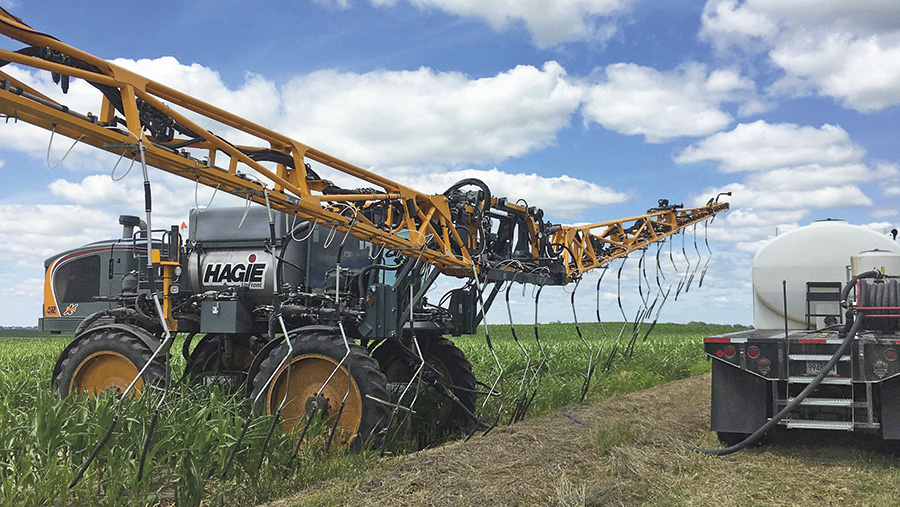
Hagie sprayer
Favourite machine?
The Hagie sprayer – it’s bigger than I need, but I also rent it out to a couple of other farmers to help pay the bills.
It’s got front-mounted 120ft booms, 15in nozzle spacing and a 1,200gal tank.
It’s also got massive ground clearance, which means I can apply liquid nitrogen mid-summer and late-season fungicide in 8ft maize.
What about cultivations?
Most people around here have a similar system when it comes to tillage.
To get rid of most of the trash before cultivations I run over with a 20ft flail shredder, windrow it and bale it for bedding.
I always do a deep-ripping job in the autumn with a combination of long shanks and chopping discs, then leave the cold weather to break up the clay-loam soil over the winter.
In the spring I then tear through with a big-tined harrow, before applying anhydrous nitrogen down to 8in using deep-working shanks to tear open the ground at 30in spacing.
People around here predominantly use anhydrous ammonia rather than granular, but if you head into other states then you might find liquid or urea is more popular.
After that, I’ll go in with the 16-row Deere corn drill.
At the same time I apply liquid fertiliser, which is tucked 1in below the surface and just in front of the Roundup Ready seed to give it a bit of a head start.
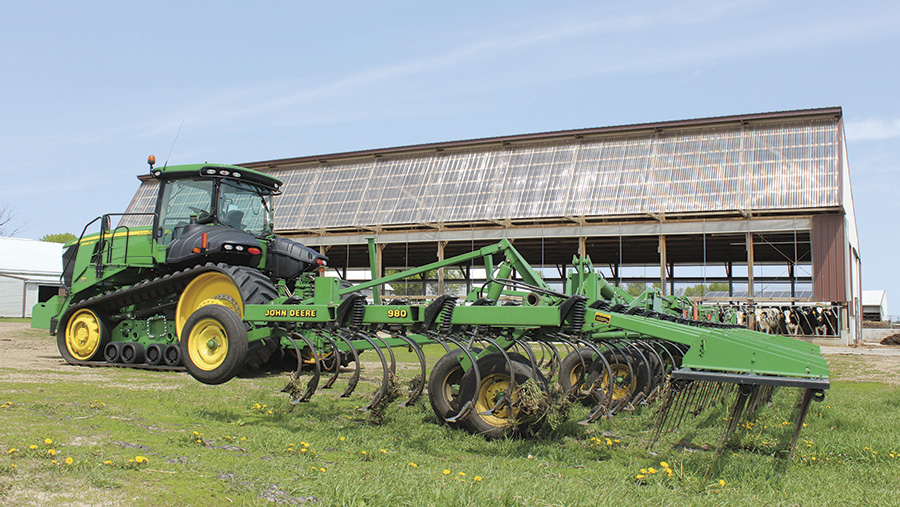
John Deere 980 cultivator and tractor
Does anyone plough?
I’ve never ploughed, though it’s occasionally used by farmers growing hybrid maize year after year.
The thick stalks take a lot of breaking up so sometimes it’s easier just to bury them.
Best buy?
Last year a friend and I found a new way to side-dress nitrogen into the base of the maize crop when it’s standing 6ft.
The Nitra Boss dribble bars attach to the normal nozzle connectors on the Hagie sprayer boom and dangle to the base of the plant to feed nitrogen into the moist area where the stem meets the ground.
So, while most of our neighbours still have to front load the nitrogen before it’s actually required by the crop and leave it at risk of volatilisation, we can time our liquid fertiliser sprays to suit the growth stages.
That means that we can apply a bulk of the fertiliser post-tassel, which accounts for more than 50% of the crop’s total nitrogen requirements.
The only downside was the cost – the bill came to $16,000 (£10,870).
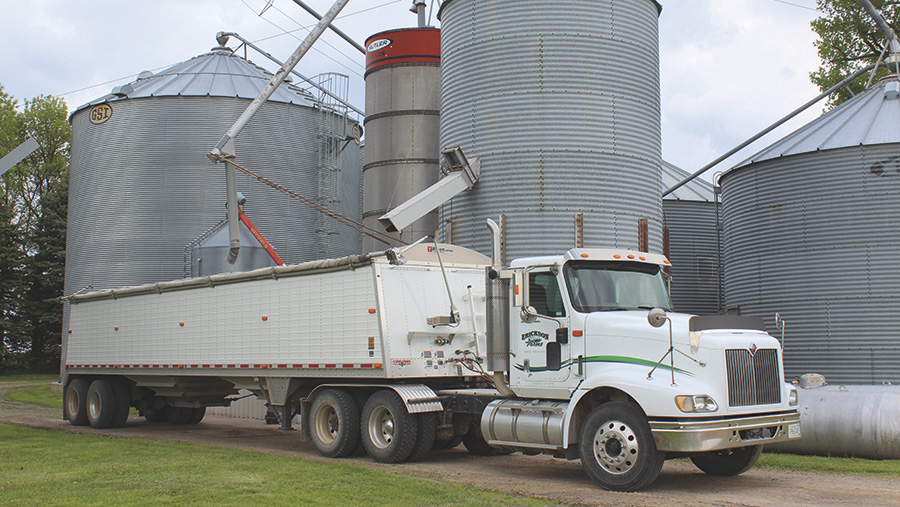
The farm makes good use of its two artic lorries
What about crop storage?
We haul everything from the combine to our two artic wagons with a Brent chaser.
The beans go straight to a processing plant 40 miles away, while 4,200t of grain maize is stored in silos on the farm once they’ve been sent through the dryer.
That gives me the flexibility of selling it when I want, which can be a bit of a lottery.

